**ATTENTION: There is a Hydlide in this post. This is not a drill. The Hydlide Alert System has been upgraded to Hydlide Warning. A Hydlide is imminent. Those who can evacuate should do so. If you cannot evacuate, shelter in place and wait for rescue personnel. Repeat: this is not a drill.**
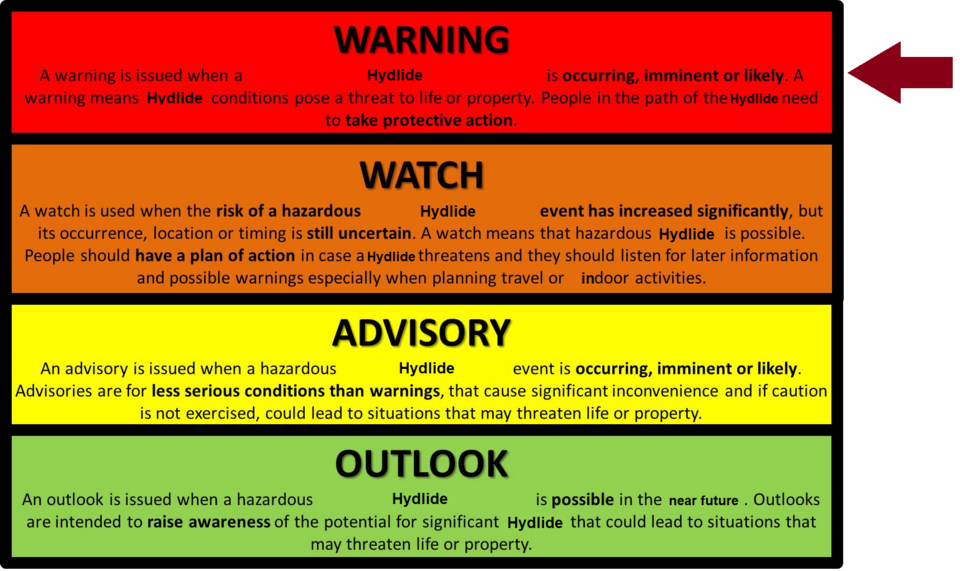
----------------------------------------------------------------------------------------------------
An explanation of what I'm doing here can be found in my introduction post.
Last week we looked at the Summer '95 lineup of Bug!, Myst, Astal, Robotica, and Street Fighter: The Movie.
This week we will look at the games released for the Saturn in September 1995: Minnesota Fats: Pool Legend, Virtual Hydlide, Shinobi Legions, Cyber Speedway, Shanghai: Triple-Threat, Virtua Fighter Remix.
----------------------------------------------------------------------------------------------------
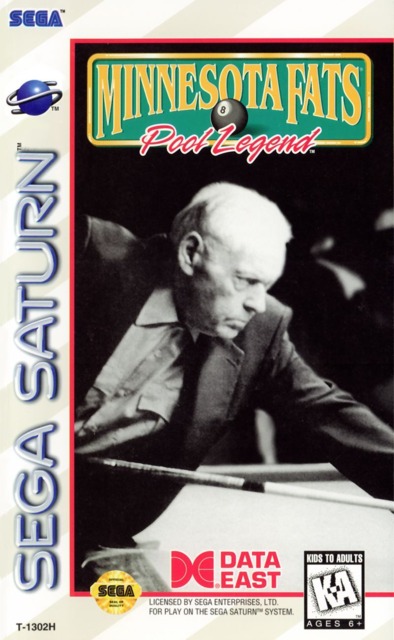
Minnesota Fats: Pool Legend
Release Date: 9/14/1995
Developer: Data East
Publisher: Data East
Time to Save Scumming: 27 Minutes
Time to Out-Hustling The Hustlers: 105 Minutes
Rudolf Wanderon Jr. was born in New York City in 1913 to Swiss immigrant parents. He supposedly played copious amounts of billiards starting from a young age, and he would eventually drop out of the eighth grade to be a pool hustler. Throughout the late 1920's and '30's he alternated between hustling pool and managing pool halls. During WWII he made good money by hustling soldiers as they passed through Norfolk, Virginia. After the war, he retired from pool hustling and went straight. This lasted until 1961, with the release of the movie Hustlers. Wanderon, who had gone by New York Fats at one point in his life, recognized himself in the character of Minnesota Fats from the movie. He quickly adopted that name for himself and began publishing books about pool techniques and inflated stories of his own pool hustling days. He used whatever sales success he gained from those books to market himself as the greatest pool player in the US. This led to multiple appearances on a variety of TV programs from the late '60's to the early '80's. From there he spent his remaining energy traveling the country performing exhibitions of pool trick shots. He gained a reputation as an amiable, boisterous personality and teller of tall tales. In 1995, he was 82 years old and living with his second wife in Nashville, Tennessee. None of his biographical information, personality, or exploits (real or imagined) are accurately represented in the game Minnesota Fats: Pool Legend.
This game is actually the second entry in Data East's Side Pocket series of 16-bit pool games. This means that the gameplay entirely consists of playing pool from a top-down view with everything rendered as sprites. You have the typical aiming and shot shaping options that you could see in any pool minigame from any modern open world game. The notable thing here is that the ball physics are, let's say, primitive. The balls deflect in ways that are noticeably unrealistic, which I first noticed when performing break shots. Shooting the cue ball at the same spot at roughly the same strength will result in the same ball distribution every time. The AI is all over the place as well, so let's classify the gameplay as mediocre and move on to the interesting parts around the edges.
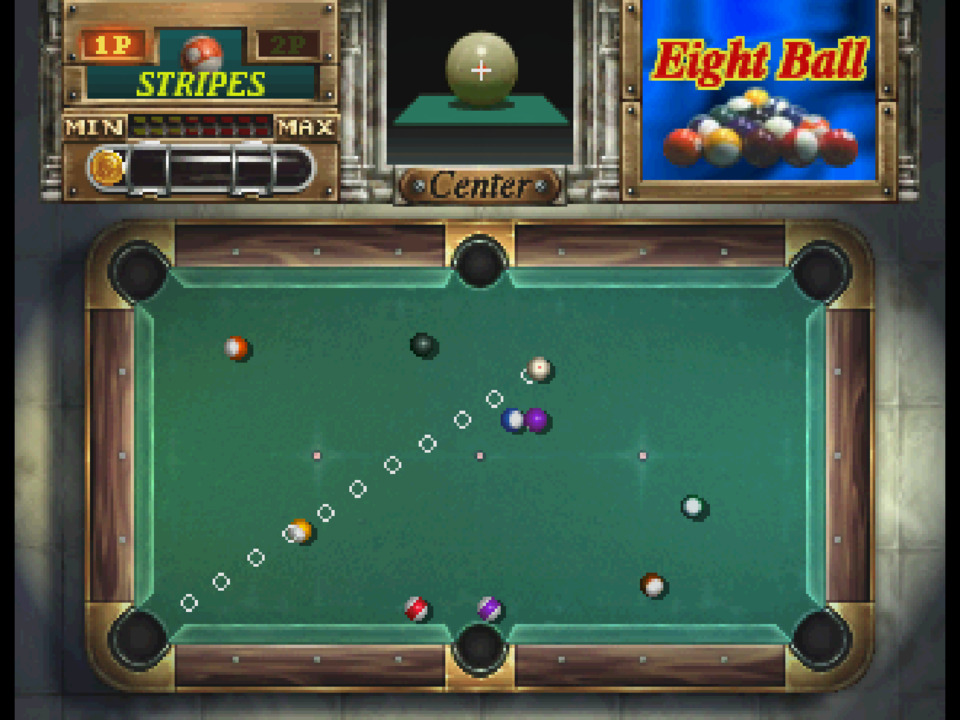
I was surprised to see the variety of play modes when I first booted it up. There's two-player, training, a trick shot puzzle mode, single game, and most importantly: a story mode. That story mode has you inhabiting Minnesota Fats as he plays against four other named characters with FMV cutscenes between each match. Those FMV scenes were the most entertainment I have gained from any Saturn game thus far. This is because the "story" and dialogue are deranged on a multitude of levels. This thing is like an onion of fuckery, so let's peel back the layers.
The game begins with Minnesota Fats (not portrayed by the then-living Minnesota Fats) hanging out in his pool hall in LA (which doesn't exist). His friend(?) Fred walks in and after some light banter so does a character named "Junior". Fats has called them all there to discuss the reappearance of Fats' old nemesis, "Big G" (who is fictional). Big G is apparently putting together a pool hustling gang that is somehow going to target Fats. Fats tells Junior that he is too old to teach Big G a lesson, and that Junior has enough skill go do it for him. Junior doesn't seem that interested but agrees anyway. Now, Junior is implied to be Fats' son, though the nature of their relationship is never explicitly defined. After a ten-day time jump, Fred walks back into Fats' pool hall, which for all of these scenes is empty save for Fats, with a newspaper and delivers the news that Junior has joined Big G's gang instead of taking it down. Fats, who is stated as being a former pool hustler, blows a gasket at the news. He vows to track down Junior and shut down Big G's gang by out-hustling them all. It seems that the reason for that last part is to demonstrate to Junior that pool hustling is bad, which doesn't make much sense.
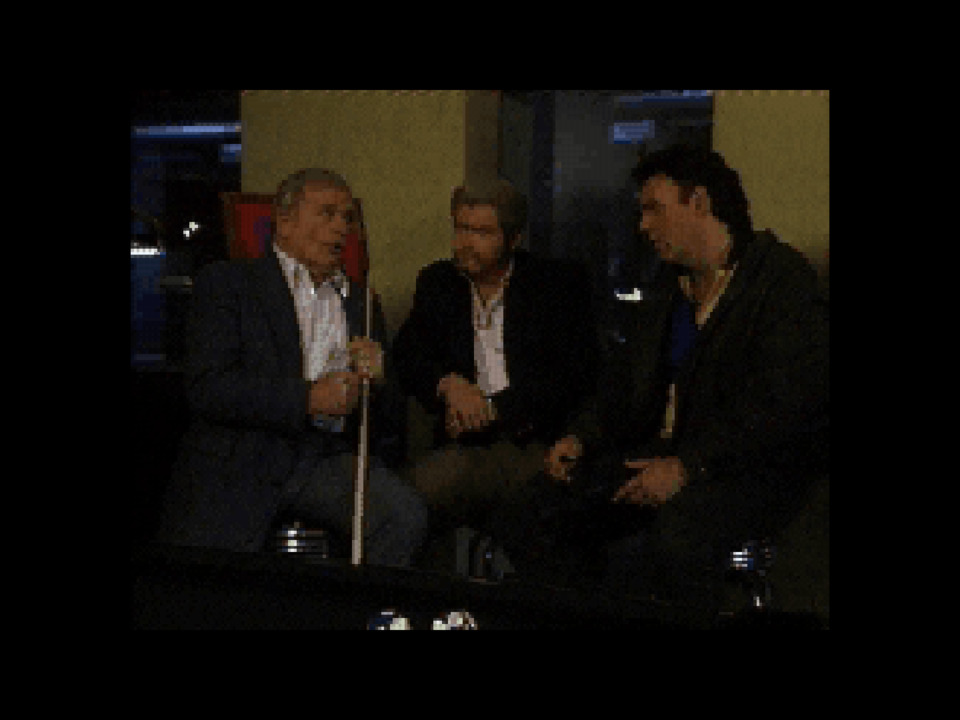
Fats starts his journey by going to another pool hall in LA. The bouncer recognizes him and just lets him in for some reason. A woman inside named Tina seems to know him and offers information on Big G's gang if Fats can beat her at pool. This is the first of four gameplay sections, and this match is extremely easy as the AI seems to actively let the player win. Also, there's an arbitrary betting screen before each match, though the player has no input in it and the game bets all of the available money in each match. For this first one, the bet is $100,000, which seems a bit steep for just a friendly game. After beating her, she tells Fats that a guy named Diamond in Las Vegas knows where to find Big G. We warp over to a pool hall in Vegas and meet Diamond, who claims to be an old frenemy of Fats (which is of course fictional) and whose entire personality is that he is extremely rotund. After beating him in the second match and gaining an additional $200,000, he tells Fats that Big G is set up in New York. We then warp to NYC and immediately meet Big G at yet another pool hall. Big G's actor goes for an over-the-top wiseguy performance and I'm here for it. This third match of the game is a significant jump up in difficulty, to such an extent that I began using save states because I had to see where this game was going. The scene that plays after defeating Big G is truly something to behold. Attempting to explain what happens could not do it any justice, so I demand that you watch it below, starting at 8:26:
Now that Fats has asserted his skill at pool-cue-jitsu, it's off to Atlantic City (because of course) to confront the game's final boss: Junior. This final series of matches is, ironically, almost impossible without cheating. Junior starts out with twice as much money as the player, so he needs to be beaten twice in a row to clean him out. The problem here is that Junior's AI seems to make exactly one mistake per game. This means that you will only be given two opportunities per match to play, once after the break and once after the AI's mandatory mistake. You must play two near-perfect games of pool in what I have already described as a janky set-up. This is challenging to do even with save states. After carefully cheating our way through the final match we are treated to an ending cutscene that has Fats laugh off Junior's betrayal and tell him that he doesn't have to go back to LA as long as he stays away from Big G. That's it. There's no other payoff to the story.
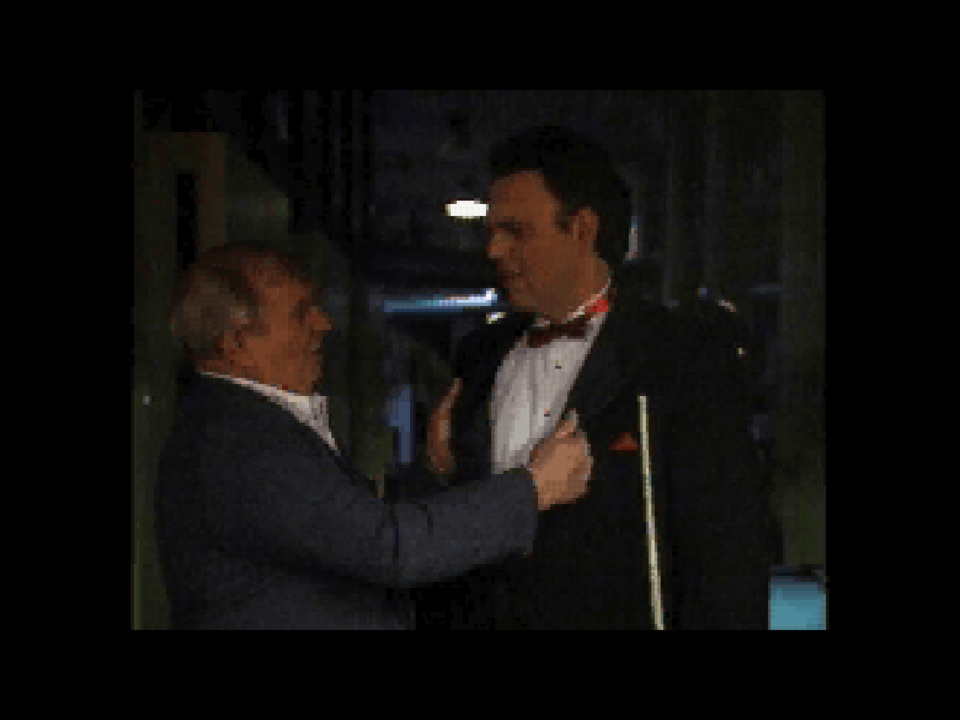
This is where I tell you that Rudolf Wanderon Jr. has never had a son. So, what we have here is a story about a real person, who in the story has morally sworn off of pool hustling (which the real Fats doesn't seem to have done) and is a successful pool hall owner (which the real Fats wasn't). This Fats has a son (who isn't real) whom he wants to hand off his legacy (which is fictional on multiple levels). The first part of this passing-of-the-torch is a test to see if the son can defeat Fats' old enemy (who doesn't have a real parallel), which the son immediately fails by joining that old enemy. Fats then has to go and take care of that enemy himself before seemingly putting his son back in his place. Yet, after proving his mastery over his son he shrugs everything off and tells his son that he is ready to stand on his own. On its own merits that plot makes no sense, and when we consider that Minnesota Fats is a real guy whose life is not reflected in that plot, the whole thing looks absolutely insane. These creative choices were not made from ignorance, as there are multiple references to Fats' books and known sayings. Examples that I noticed were the cover of his most famous book being used as the games title card and the actor playing Fats using the line, "a tuxedo on a pool player is like ice cream on a hotdog" in the final scene. I have no idea what input the real Minnesota Fats had in this or why any of this happened the way it did.
This isn't even touching the other modes and their endings, which are bizarre in their own rights. Finally, this game has more music tracks than I've seen in any CD-based games thus far. The in-game music player has 33 tracks on it, and they are better than they have any right to be. Everything about this game is weird and inexplicable. I don't know how to process what I experienced, and I'm afraid that if I dig any deeper, I will become only more confounded.
----------------------------------------------------------------------------------------------------
***CONTENT WARNING: Hydlide***
----------------------------------------------------------------------------------------------------

Shinobi Legions
Release Date: 9/21/1995
Developer: TOSE
Publisher: Vic Tokai
Time to Checking Out At The Third Boss: 33 Minutes
After the madness of the last two games, we finally wash up on the shores of explicability, even if this game does have silly FMV. This is the first and only entry in the Shinobi series released for 32-bit consoles. The Shinobi games are side-scrolling action platformers that were mainstays on Sega's earlier consoles. These games could be seen as Sega's answer to the Ninja Gaiden games…or Ninja Gaiden was Tecmo's answer to Shinobi. Whatever, they're both that exact type of masocore 2D action game.
Shinobi Legions is a kind of reboot of the series, taking the gameplay the series was known for but with new-fangled graphics and a new story. That unfortunately means we don't get to see the delightfully named Joe Musashi, but we do get some equally delightful corny FMV cutscenes between levels. As the premise goes, there's an ultimate ninja technique that was known only to an old master, who is deceased. His three apprentices, two brothers and his own daughter, were supposed to inherit that technique (I think) but one of the brothers turns evil and creates a ninja army to conquer the world. I hate it when that happens. So, that ninja army abducts the girl, who despite being a ninja can't defend herself, and we play as the remaining good brother who has to go and save the day. This is standard stuff, but it's presented through live-action cutscenes that have all the vibe and production values of a cheapo straight-to-video Japanese action movie from the early 90's. If you told me those scenes were from some lost B-movie that has a weird cult following, I would believe you. I would also maybe be part of that weird cult following. All of this is to say that I enjoyed watching this game far more than playing it.
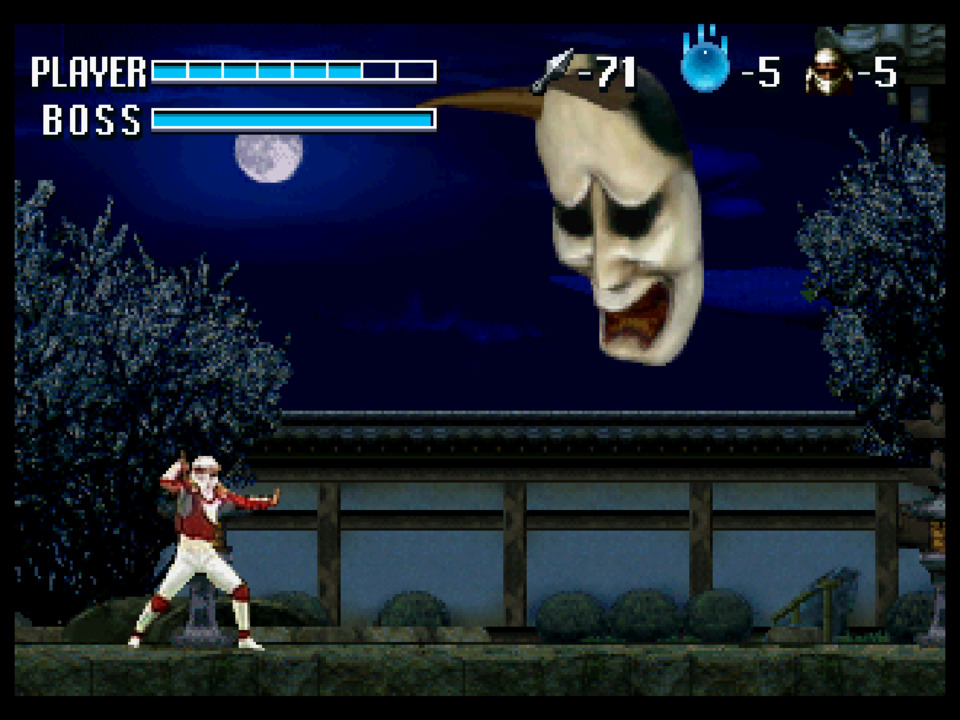
The game part of this game works like any other entry in the Shinobi series. It's slightly longer than Shinobi III, but it also seems to be less mechanically interesting. It's hard for me to put my finger on why this game feels bland. I will say that it is less visually or musically interesting than Shinobi III, which is ironic as this entry goes out of its way to utilize the latest and greatest graphical innovations available on the Saturn. The main character and enemies consist of nicely rotoscoped sprites, some of the bosses are polygonal, the visual fidelity is better than a Genesis could ever produce, and this game utilizes that sweet, sweet CD QUALITY AUDIO. And yet, this game is artistically lacking. Nothing going on here rises to the level of coolness found in the horse-riding sequence of Shinobi III. What Shinobi Legions does successfully carry over is the excessive difficulty of prior entries. I only made it to the third out of nine bosses before walking away out of frustration. As is normal for these games, you aren't going to get very far without gaining a very high level of familiarity with the controls and memorization of the levels and boss patterns. I don't have that dedication in me, especially when the payoff is FMV that, while bad, is not bizarre enough to make the slog worthwhile.
----------------------------------------------------------------------------------------------------
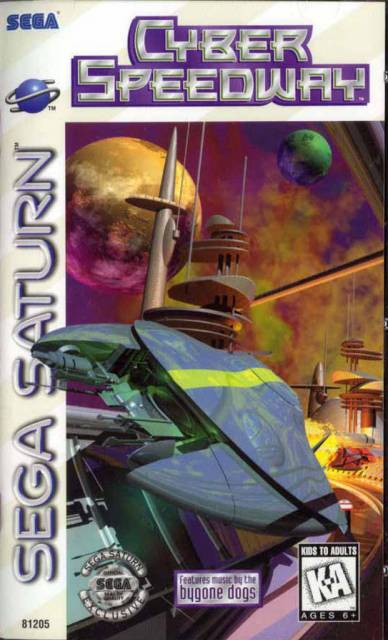
Cyber Speedway
Release Date: 9/22/1995
Developer: NexTech
Publisher: Sega
Time to Hitting a Wall: 60 Minutes
Now that we're on the subject of bizarre stories, let's talk about Cyber Speedway. This is a sci-fi racing game that was able to release ahead of WipEout and Hi-Octane and provide Sega's entry into that sub-genre. Sega, whose competition with Namco had resulted in all the major advances in racing gameplay over the previous decade, was going to get in early with a hover-vehicle racing game and show everyone how it's done. At least, someone at some point must have thought that. What we end up with is an aggressively mediocre racing game that feels like it's going to fall apart at the seams at any moment. I should probably back that statement up.
There are six tracks to race on with six racers to choose, so this is already a somewhat thin package. The main draw, other than the two-player, is the story mode. This story seems to follow an up-and-coming human cybersled (no, not that Cyber Sled) racer in the far future. The player has won the right to represent earth in an interplanetary racing competition. Other than the player character, the cast includes your mechanic, the shady moneyman, and the other racers who are from, let's say, creatively designed alien races. While these characters are all fully voiced, the cutscenes consist of static images drawn in a comic book style. While the presence of voiced characters is usually appreciated, it might have been a mistake here. Not only is the dialogue bad, but the affectation and audio effects on the alien characters combine in a way that make at least half of them completely incomprehensible without subtitles, which don't exist. I was able to always get the sense that they were shit-talking me, but I only kind of understood what was even being discussed. That's why I can confidently state that there is some weird lore in this game, but I have no good idea of what that lore is. The overall effect is unintentionally surreal and bizarre, like a bad fever dream.
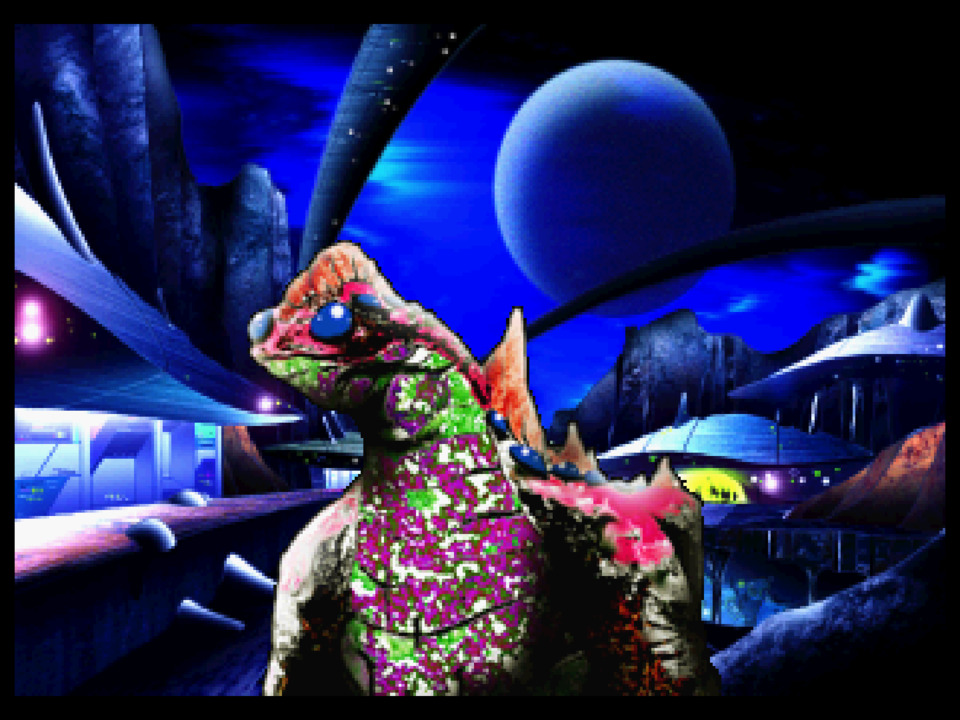
All of that is independent of the actual racing, which errs more on the Hi-Octane end of the uncontrollability spectrum, rather than the WipEout end. The vehicles are just as floaty as you would think, and the weapons are almost entirely useless. I also never figured out how to take full advantage of the boost system. There are separate buttons for a left boost and a right boost that drain the same meter. At first, I thought those were turn buttons like in WipEout, but they super are not. They also didn't seem to add too much to my speed when I used them, so I dunno. There are some vehicle customization options that have minor effects on the handling characteristics, but you could not interact with those and probably be fine. Additional tension is added to the races by the feeling of graphical instability. The draw distance and pop-in is somehow more catastrophic and the polygons seem even more unhappy here than in Daytona USA. The players vehicle jitters around a good bit and it isn't hard to clip into and out of walls. Other than that, the framerate keeps up and it looks relatively alright when not in motion.
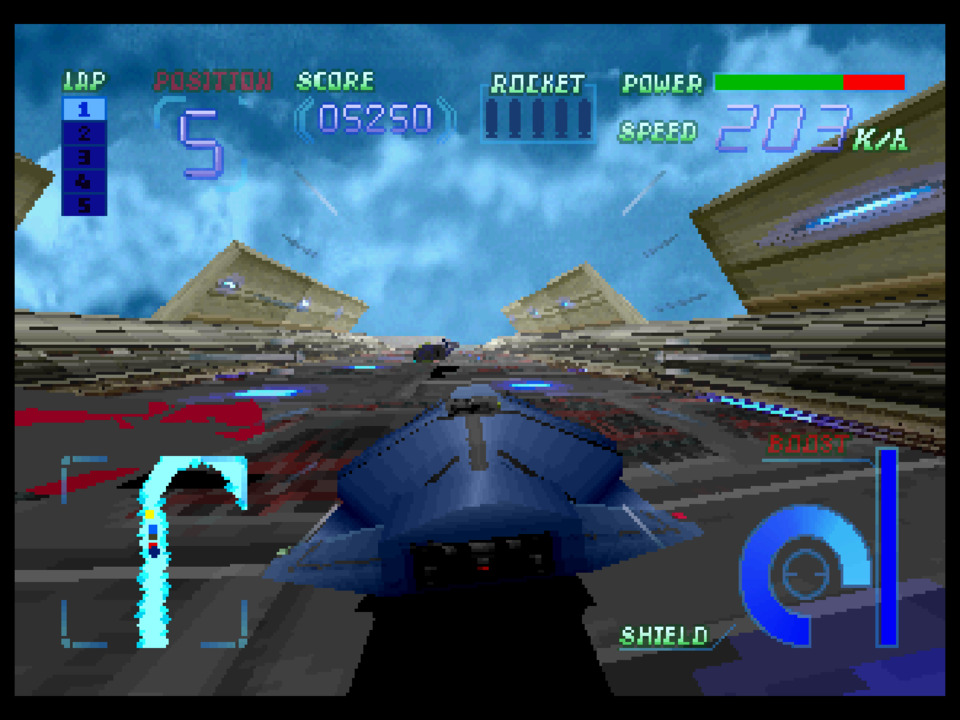
The fever dream feeling I got from the story sections was heightened by the race music. It's hard to put it in either the pro or the con column, as the music itself is fine for what it is but also wildly inappropriate for this gameplay. Most of the songs that play during races seem to have come from a band called Bygone Dogs, whom I can find almost nothing about outside of this game. The sound lands in a zone that I would call Very Mid-90's Alt Rock. Listen for yourself:
Now imagine playing WipEout with that blasting out the speakers and you can get a sense of the weirdness. I really don't have any other commentary about it, my brain breaks trying to define the overall aesthetic created by these sights with that sound.
Finally, I must bring up the big sticking point I have with this thing. There are two difficulties, Standard and Advanced. Playing on Standard is the sensible thing to do, but that choice leads you through five out of the six races before telling you that you need to replay the game on Advanced to see the ending. The sons of bitches Panzer Dragoon-ed me, AGAIN. That's still a real bastard of a thing to do, except this time the story isn't compelling enough for me to even consider trudging my way through the harder difficulty. I have no idea what the ending is, and I never will. Let's just assume that the main guy becomes emperor of the galaxy or some bullshit and move on.
----------------------------------------------------------------------------------------------------

Shanghai: Triple-Threat
Release Date: 9/25/1995
Developer: Activision
Publisher: Activision
Time to No More Moves: 45 Minutes
You know the Mahjong Solitaire game that's come included with Windows operating systems for the past 20 or so years? This is basically that but with d-pad controls for the mouse cursor. I'll see how much I can say about it.
Shanghai is the name commonly given to Mahjong Solitaire, probably because of colonialism or something, and this genre of game has been around for almost as long as personal computing has existed. The gameplay is summed up as matching and removing mahjong tiles, which are piled up in specific patterns, until all the tiles have been removed. This specific game comes with multiple configurations and all the settings and options you would want. There are normal and arcade modes, with the arcade mode adding a timer and high scores. There's also an odd little campaign mode where you go through a bunch of levels laid out on an overworld. Also, the d-pad cursor sucks, but most of you could have guessed that by now. This might be the most straightforward and self-explanatory game I've looked at so far. The biggest problem here is that it's an inherently mild killer of time; it's the kind of game you play these days while on the toilet, not on a console with your full attention.
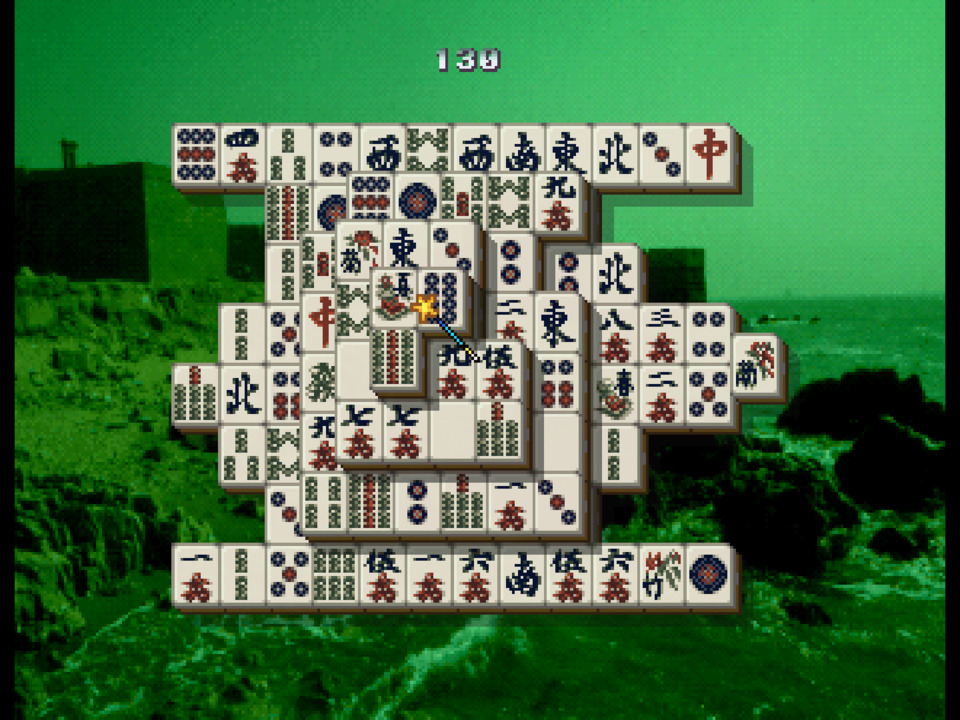
The interesting part has to do with where this game came from. You might have seen the word "Mahjong" at the beginning and said, "Like five million Mahjong games come out in Japan every year, nothing to see here." Yet, this is an American game, and the fourth in a long running series. The original Shanghai was programmed and released by Activision for PCs in 1986, only later to get ported to Japan by Sunsoft. That original game would get ported to every platform then in existence, including the Master System and Japanese arcades. The next two games would see releases on PCs and arcades in 1990 and 1993. In fact, Shanghai: Triple-Threat was released for 32-bit consoles the same year that Shanghai: Great Moments was released for the new-fangled Windows operating system. This series would continue as a partnership between Activision and Sunsoft out until it died out at the turn of the century. Therefore, this series is officially more successful than Hydlide.
----------------------------------------------------------------------------------------------------
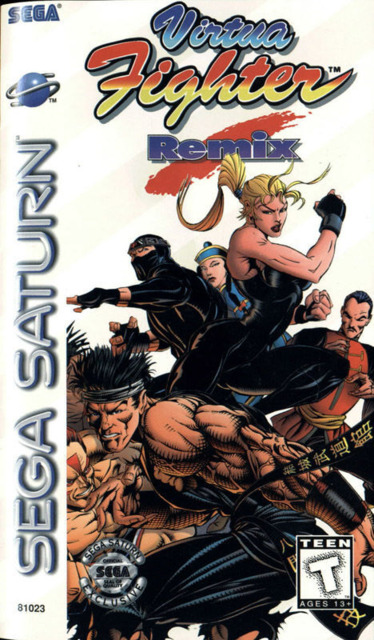
Virtua Fighter Remix
Release Date: 9/28/1995
Developer: AM1
Publisher: Sega
Time to Looking Up The Combos Again: 7 Minutes
Time to Seeing Credits: 21 Minutes
Well, this is familiar. This is game number 17 in our series, and it's functionally identical to game number 5, way to go Sega. We know what Virtua Fighter is, and this version greatly improves the character models and presentation, sounds better, and fixes any bugs or glitches that came with the original. I was able to somehow beat the ladder pretty quickly, where I saw the disappointing ending and heard the greatest song in the game (are they saying, "Get go" or "Get good"?). Also, Dural is mega-fucked, though I suppose I'm 30 years late to the party on that take.
What grabbed my interest was the convoluted release schedule for the early Virtua Fighter series. I had to create a timeline to try and make sense of it all:
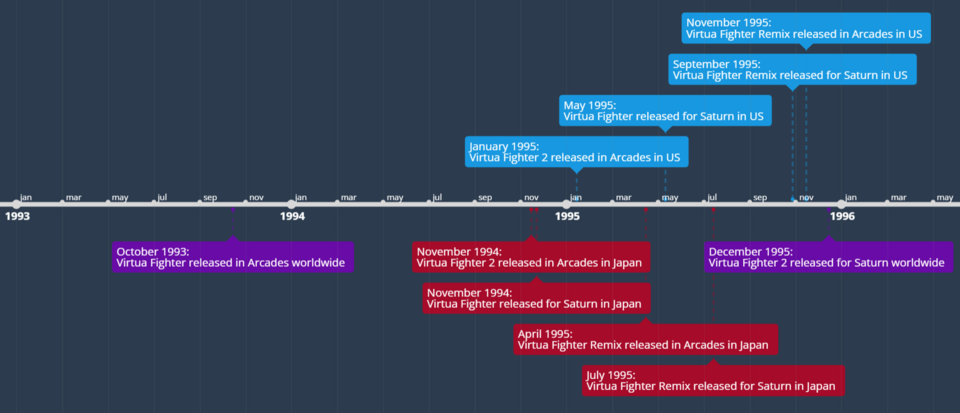
This would probably look fine if I was an executive at Sega of Japan. From that perspective, Virtua Fighter 2 is put out in arcades 13 months after the first one, while simultaneously having that first one made available for the new console. That's effective synergy. Five months after that, most of the existing Virtua Fighter boards in Japan, which are still seeing plenty of action, get upgraded to Virtua Fighter Remix to bring that experience up to the quality of the sequel. Three months later that upgraded version is released to the Saturn, which would be 9 months after the original version. Then five months after that Virtua Fighter 2 gets released on the Saturn, 13 months after its original arcade release and the Saturn release of the first game. That's not a bad way to handle a fighting game series.
Yet, when looking at North America, the scheduling is a tire fire. You get VF2 in arcades 15 months after the original, which is fair. But you don't have VF1 on the Saturn for another four months. So instead of those two releases feeding into each other's popularity, you have players spending a third of a year adjusting to the new game before putting the older game out on consoles. Four months after that you get the Remix console version and it takes almost 2 more months for that to get out in arcades, which is ass-backwards. Finally, less than a month after that, VF2 makes it to consoles. You get the three entries in the series put out on consoles within seven months of each other, and two entries in arcades in the same year. The timing between those arcade releases also doesn't help, with 10 months in the US versus 4 months in Japan. There is no marketing plan that could get the game playing public on-board with that schedule. There might be full details to the story behind this somewhere out there, but I'm led to believe that this cadence was imposed on Sega of America by the Japan office. That belief comes from, if this is true, Virtua Fighter being a pack-in title for the Saturn at the US launch and Remix being made available for free to owners of the original. Sega would have eaten a lot of cost to make that happen, but it was probably the only thing SOA could do to retain player interest without changing the schedule.
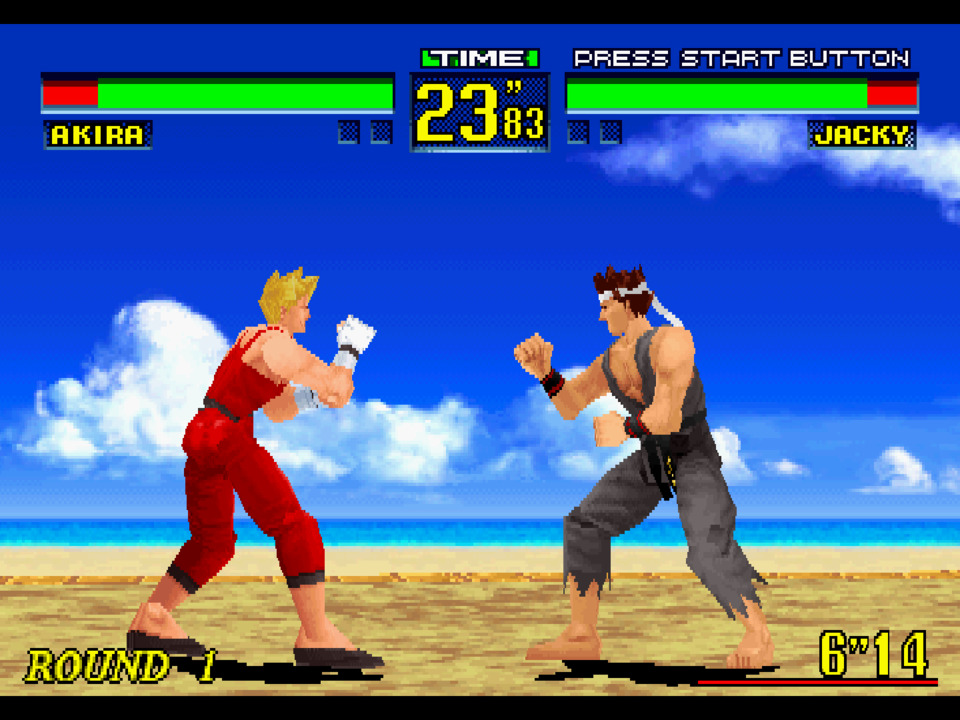
I look at that timeline and think, if Sega had released the Saturn in August like they were supposed to, they could have probably gotten Remix available as a pack-in for that launch and have just skipped the original entirely. At that point they're doing half the disc runs and could maintain more interest for VF2. So, these games could be victims of the botched launch as much as anything else. Not that doing the Virtua Fighter franchise correctly would have saved the Saturn, but they could have at least tried to put up a real fight against Sony.
----------------------------------------------------------------------------------------------------
I've updated my Ranking of All Saturn Games with these releases. They have been slotted in at:
1. Panzer Dragoon
...
2. Virtua Fighter Remix
5. Minnesota Fats: Pool Legend
8. Shinobi Legions
9. Cyber Speedway
11. Shanghai: Triple-Threat
15. Virtual Hydlide (technically the worst game, but not my least favorite because I'm a sicko)
…
17. Pebble Beach Golf Links

The disaster descended upon us, and we have weathered the storm (mostly) intact. Yet, it feels like a job half done. I'm off next week, but the week after that I'm going to put out something special. Join me then as I sift through the cultural wreckage wrought by the Hydlide series; where I try to make sense of what it even is, why it happened, and answer the question of whether any of it was necessary. If you like bad shit, be sure to check it out in two weeks.
After that we'll get back on the Saturn bandwagon with the October '95 releases: NHL All-Star, World Series Baseball, Off-World Interceptor Extreme, Romance of the Three Kingdoms IV: Wall of Fire, SimCity 2000, and Black Fire.
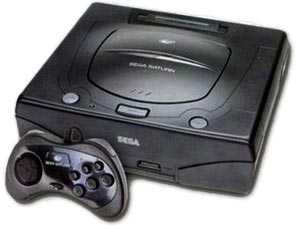

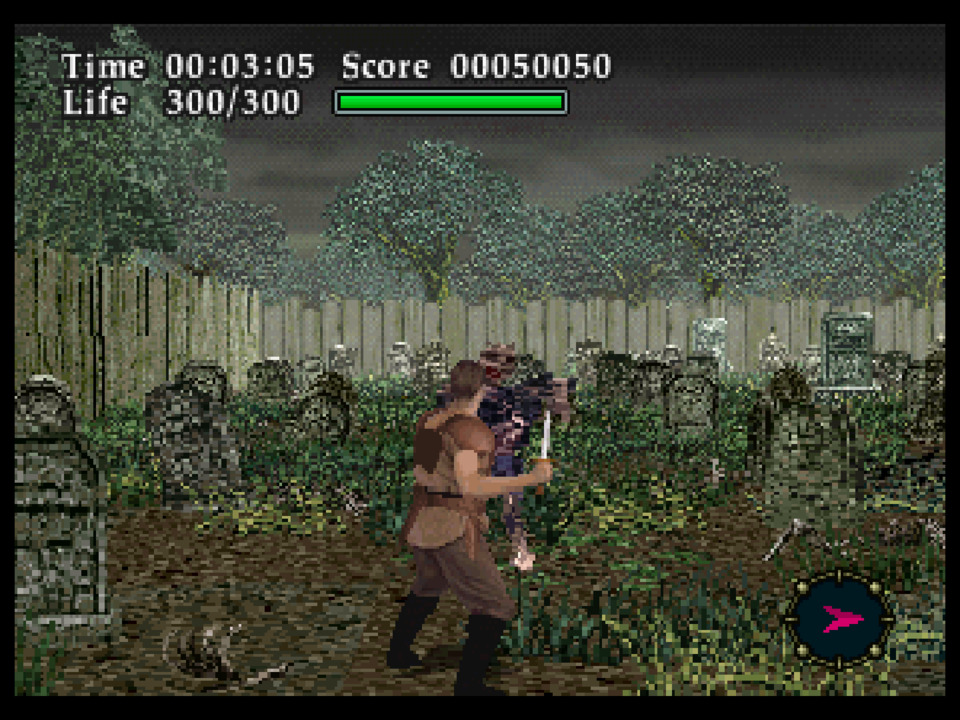
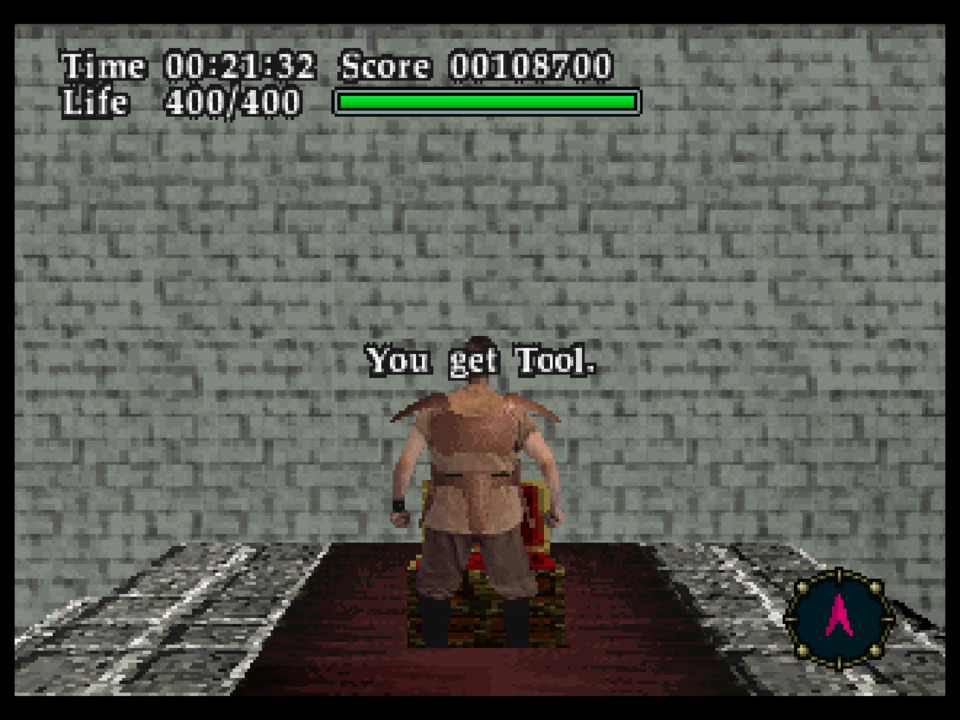
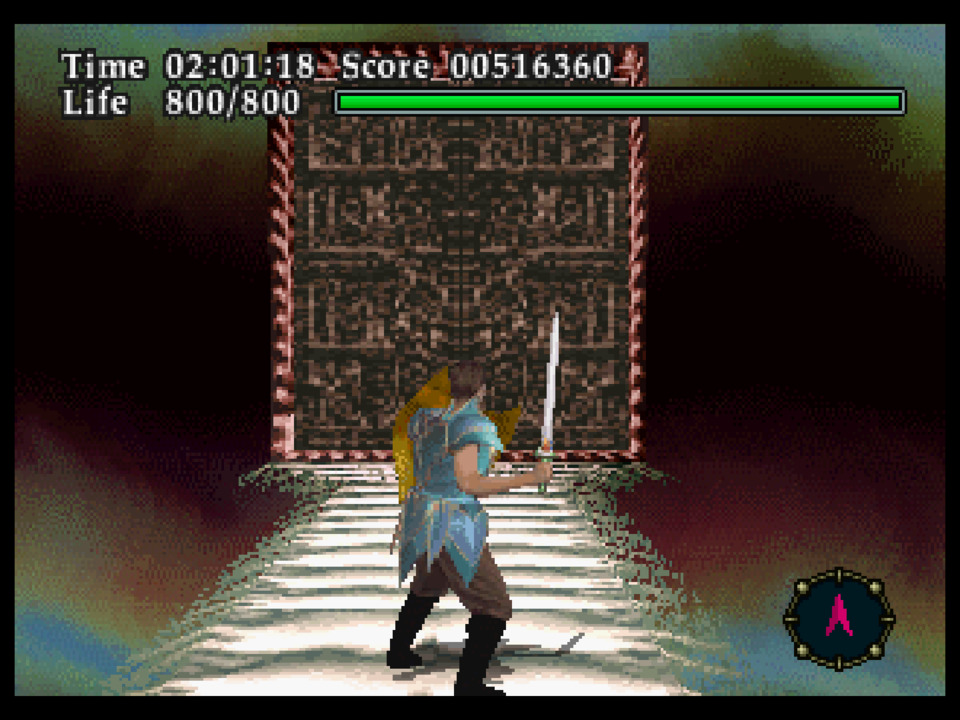
Log in to comment